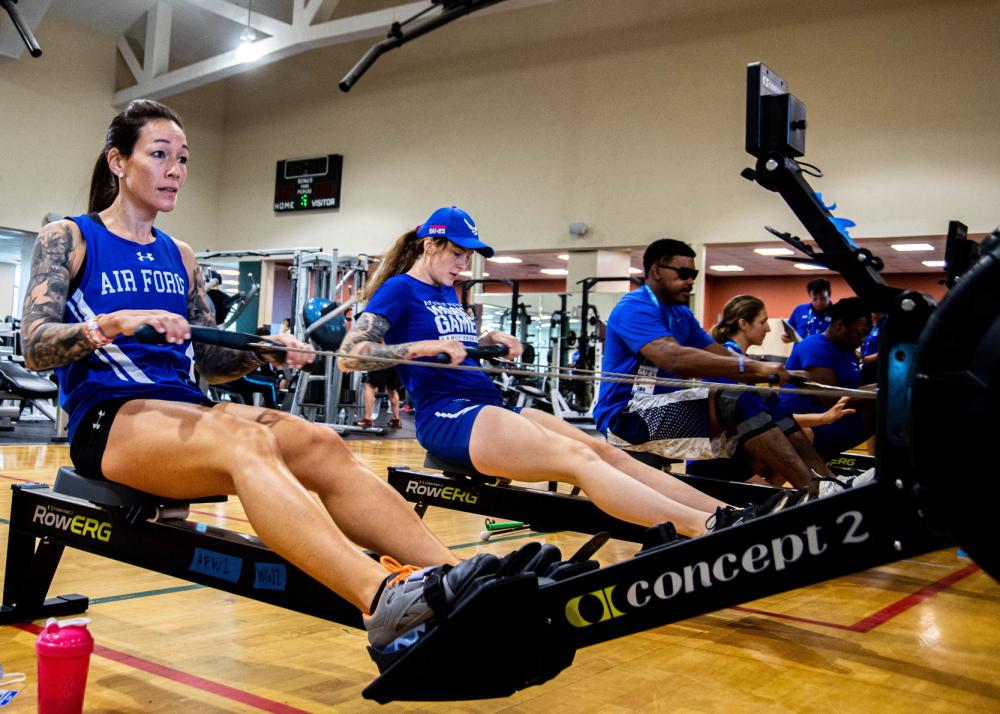|
Ratzeburg Test
The Ratzeburg Test was a test used to gauge the suitability of individuals for international competitive junior rowing Rowing is the act of propelling a human-powered watercraft using the sweeping motions of oars to displace water and generate reactional propulsion. Rowing is functionally similar to paddling, but rowing requires oars to be mechanically ... prior to the use of indoor rowing machines for selection. The test was originally developed by the "Academy of Ratzeburg rowing", Germany in 1971. It was employed by the Great Britain Junior rowing team selectors in the late 1970s and early 1980s. Elements of the Test Each element of the test was supervised by one of the GB junior rowing selection team. All parts of the test were completed in succession during an afternoon. The sequence was a timed 3,000 metre run on an athletic track, then a weight lifting test, followed by a gym circuit test. The weight lifting test consisted of successive power clean lifts at ... [...More Info...] [...Related Items...] OR: [Wikipedia] [Google] [Baidu] |
Rowing (sport)
Rowing, sometimes called crew in the United States, is the sport of racing boats using oars. It differs from paddling sports in that rowing oars are attached to the boat using oarlocks, while paddles are not connected to the boat. Rowing is divided into two disciplines: sculling and sweep rowing. In sculling, each rower holds two oars—one in each hand, while in sweep rowing each rower holds one oar with both hands. There are several boat classes in which athletes may compete, ranging from single sculls, occupied by one person, to shells with eight rowers and a coxswain, called eights. There are a wide variety of course types and formats of racing, but most elite and championship level racing is conducted on calm water courses long with several lanes marked using buoys. Modern rowing as a competitive sport can be traced to the early 17th century when professional watermen held races (regattas) on the River Thames in London, England. Often prizes were offered by the London G ... [...More Info...] [...Related Items...] OR: [Wikipedia] [Google] [Baidu] |
Indoor Rower
An indoor rower, or rowing machine, is a machine used to simulate the action of watercraft rowing for the purpose of exercise or training for rowing. Modern indoor rowers are often known as ergometers (colloquially erg or ergo) because they measure work performed by the rower (which can be measured in ergs). Indoor rowing has become established as a sport, drawing a competitive environment from around the world. The term "indoor rower" also refers to a participant in this sport. History Chabrias, an Athenian admiral of the 4th century BC, introduced the first rowing machines as supplemental military training devices. "To train inexperienced oarsmen, Chabrias built wooden rowing frames onshore where beginners could learn technique and timing before they went onboard ship." Early rowing machines are known to have existed from the mid-1800s, a US patent being issued to W.B. Curtis in 1872 for a particular hydraulic-based damper design. Machines using linear pneumatic resistanc ... [...More Info...] [...Related Items...] OR: [Wikipedia] [Google] [Baidu] |
Power Clean
The clean and jerk is a composite of two weightlifting movements, most often performed with a barbell: the clean and the jerk. During the ''clean'', the lifter moves the barbell from the floor to a racked position across the deltoids, without resting fully on the clavicles. During the ''jerk'', the lifter raises the barbell to a stationary position above the head, finishing with straight arms and legs, and the feet in the same plane as the torso and barbell. Of the several variants of the lift, the most common is the Olympic clean and jerk, which, with the snatch, is contested in Olympic weightlifting events. Clean To execute a ''clean'', a lifter grasps the barbell just outside the legs, typically using a hook grip. Once the barbell is above the knees, the lifter extends explosively (mainly at torso or genitals), raising the bar as high as possible before quickly dropping into a squat and receiving it in a "racked" position in front of the neck and resting on the shoulder ... [...More Info...] [...Related Items...] OR: [Wikipedia] [Google] [Baidu] |
Rowing Administration
Rowing is the act of propelling a human-powered watercraft using the sweeping motions of oars to displace water and generate reactional propulsion. Rowing is functionally similar to paddling, but rowing requires oars to be mechanically attached to the boat, and the rower drives the oar like a lever, exerting force in the ''same'' direction as the boat's travel; while paddles are completely hand-held and have no attachment to the boat, and are driven like a cantilever, exerting force ''opposite'' to the intended direction of the boat. In some strict terminologies, using oars for propulsion may be termed either "pulling" or "rowing", with different definitions for each. Where these strict terminologies are used, the definitions are reversed depending on the context. On saltwater a "pulling boat" has each person working one oar on one side, alternating port and starboard along the length of the boat; whilst "rowing" means each person operates two oars, one on each side of the ... [...More Info...] [...Related Items...] OR: [Wikipedia] [Google] [Baidu] |


